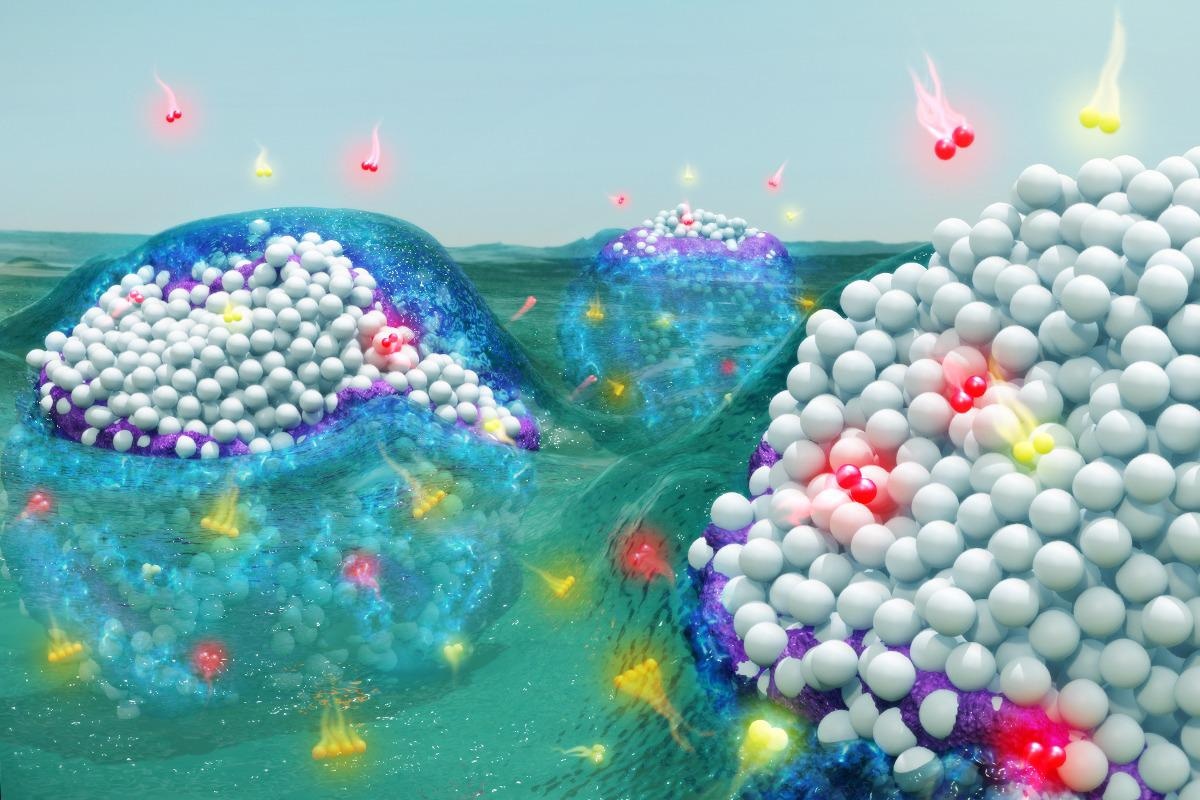Feb 5 2021
Toxic solvents like benzene and alcohols are often used by chemical manufacturers to make products such as plastics and pharmaceuticals.
 Illinois researchers are part of a multi-institutional team that found that solvents spontaneously react with metal nanoparticles to form reactive complexes that can improve catalyst performance and simultaneously reduce the environmental impact of chemical manufacturing. Reprinted with permission from D. Flaherty et al., Science 371:6529 (2021). Image Credit: Graphic courtesy Alex Jerez, Imaging Technology Group - Beckman Institute.
Illinois researchers are part of a multi-institutional team that found that solvents spontaneously react with metal nanoparticles to form reactive complexes that can improve catalyst performance and simultaneously reduce the environmental impact of chemical manufacturing. Reprinted with permission from D. Flaherty et al., Science 371:6529 (2021). Image Credit: Graphic courtesy Alex Jerez, Imaging Technology Group - Beckman Institute.
Scientists are analyzing a previously ignored and misunderstood phenomenon in the chemical reactions employed to make such products. This breakthrough offers new basic insight into catalytic chemistry and forms the basis of realistic applications that could one day make chemical manufacturing more environmentally friendly and less wasteful.
The research carried out under the guidance of University of Illinois Urbana-Champaign scientist David Flaherty, University of Minnesota, Twin Cities researcher Matthew Neurock, and Virginia Tech scientist Ayman Karim has been published in the journal Science.
Mixing metal nanoparticles and solvents speeds up several chemical reactions and enables optimizing yield and profit margins for the chemical sector.
According to the team, several solvents are poisonous and are hard to dispose of safely. Water also works but it is not almost as reliable or efficient as organic solvents. The reason for the variance was considered as the lower solubility of certain reactants in water. But due to several inconsistencies in experimental data, the research team believes that the reasons for these differences were not completely understood.
To gain better insights into the process, the researchers performed experiments to examine the reduction of oxygen to hydrogen peroxide—one set with water, another one with methanol, and others with mixtures of water and methanol. Palladium nanoparticles were used in all experiments.
In experiments with methanol, we observed spontaneous decomposition of the solvent that leaves an organic residue, or scum, on the surface of the nanoparticles. In some cases, the scumlike residue clings to the nanoparticles and increases reaction rates and the amount of hydrogen peroxide formed instead of hampering the reaction. This observation made us wonder how it could be helping.
David Flaherty, Professor of Chemical and Biomolecular Engineering, University of Illinois
The researchers discovered that the residue, or surface redox mediator, contains oxygen-containing species, with hydroxymethyl as the main component. It gathers on the surface of the palladium nanoparticles and forms new chemical reaction pathways.
Once formed, the residue becomes part of the catalytic cycle and is likely responsible for some of the different efficiencies among solvents reported over the past 40 years of work on this reaction. Our work provides strong evidence that these surface redox mediators form in alcohol solvents and that they may explain many past mysteries for this chemistry.
David Flaherty, Professor of Chemical and Biomolecular Engineering, University of Illinois
The researchers worked with several kinds of experiments and computational simulations and learned that these redox mediators have the ability to efficiently transfer both electrons and protons to reactants, while reactions in pure water move protons easily, but not electrons. These mediators modify the surface of the nanoparticles such that the energy barrier to be overcome for proton and electron transfer is reduced.
“We show that the alcohol solvents as well as organic additives can react to form metal-bound surface mediators that act much in the same way that the enzymatic cofactors in our bodies do in catalyzing oxidation and reduction reactions,” stated Neurock.
Moreover, this study could apply for achieving reductions in the amounts of solvent utilized and waste produced in the chemical sector.
Our research suggests that for some situations, chemical producers could form the surface redox mediators by adding small amounts of an additive to pure water instead of pumping thousands of gallons of organic solvents through these reactors.
David Flaherty, Professor of Chemical and Biomolecular Engineering, University of Illinois
This study was funded by the Energy and Biosciences Institute through the EBI-Shell program as well as the National Science Foundation.
Journal Reference:
Adams, J. S., et al. (2021) Solvent molecules form surface redox mediators in situ and cocatalyze O2 reduction on Pd. Science. doi.org/10.1126/science.abc1339.